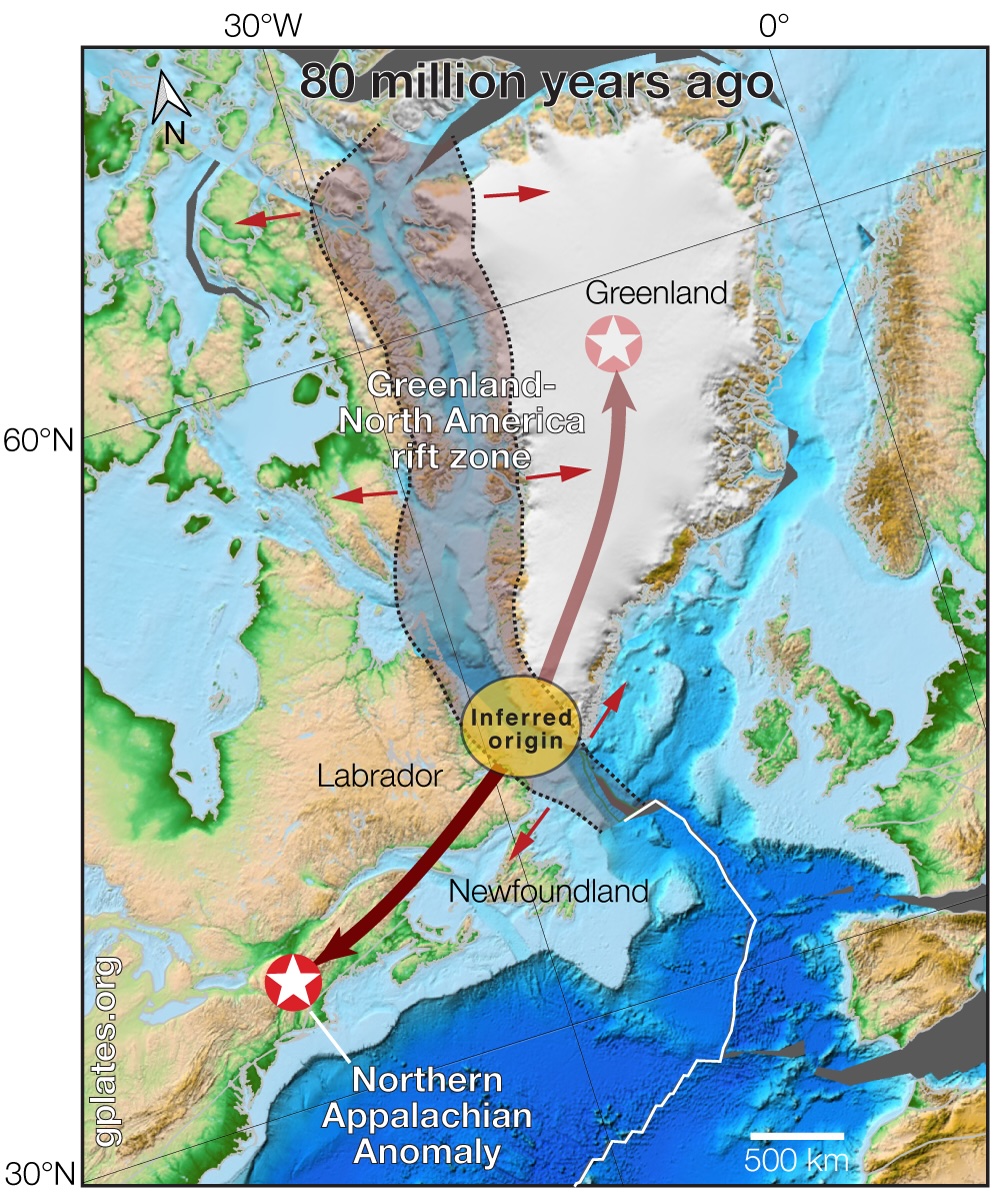A recently published study in Geology by Thomas M. Gernon, Sascha Brune, Thea K. Hincks, and Derek Keir provides new insight into an enormous mantle anomaly—a zone of unusually hot and low-density rock—deep beneath New England.
This feature, known as the Northern Appalachian Anomaly (NAA), measures approximately 400 kilometers across and lies about 200 kilometers below the Earth’s surface, within the asthenosphere, the partially molten layer of the upper mantle.
Based on advanced geotectonic reconstructions and mantle flow simulations, the team concludes that this anomaly is not a recent phenomenon but a long-lived remnant of the Labrador Sea rifting event that occurred roughly 85–80 million years ago, during the late Cretaceous period.


The researchers argue that its movement toward the New York City region is part of a much slower, larger-scale mantle migration process that began when North America and Greenland separated.
An Ancient Mantle Instability on the Move
For decades, geologists tried to explain the NAA using the concept of edge-driven convection, a process where temperature contrasts between oceanic and continental lithosphere generate vertical currents in the mantle. However, this explanation had a major flaw: the Atlantic passive margin—the eastern edge of North America—has been tectonically dormant for about 180 million years, far longer than such convection cells are thought to remain active.
The new study offers an alternative: the anomaly is a Rayleigh–Taylor instability, a geophysical process in which a less dense, buoyant mantle layer pushes upward into a denser, cooler layer above it. This instability likely began at the time of the Labrador Sea’s continental breakup, when the lithosphere was stretched and thinned as Greenland and North America drifted apart.
Once initiated, the upwelling of hotter mantle rock became a self-sustaining feature, migrating west-southwest at an estimated 22 kilometers per million years. That speed, the authors note, aligns closely with the rates predicted by global-scale mantle convection models, suggesting the movement is not random but driven by deeper mantle dynamics.
A Matching Anomaly Beneath Greenland
One of the most compelling pieces of evidence for the Labrador Sea origin comes from seismic imaging beneath north-central Greenland. There, scientists have identified a mirror-image mantle anomaly—similar in size, depth, and seismic velocity structure to the NAA—that appears to have formed during the same tectonic episode.
The symmetry suggests that both anomalies are remnants of a single, massive upwelling event that spanned the rift zone. As the Labrador Sea opened, these instabilities likely developed on either side of the separating continents. While the Greenland anomaly has remained close to its point of origin, the NAA has been steadily migrating across the North American plate, traveling several thousand kilometers over tens of millions of years.


The study also highlights the Central Appalachian Anomaly, farther south, as a potential “younger sibling” of the NAA—representing an earlier stage in the same migration process. If confirmed, this would mean that mantle instabilities can occur in chains, leaving a trail of thermal anomalies that map the history of deep mantle flow.
What This Means for Tectonic Stability
Although the NAA does not present any immediate hazard to people living above it, its existence challenges long-standing views about the tectonic stability of eastern North America. The conventional picture of the eastern United States as a geologically quiet, structurally stable region does not account for the possibility of migrating mantle plumes or instabilities beneath the crust.
Over geological time, such upwellings can weaken the overlying lithosphere, alter patterns of magmatism, and in extreme cases contribute to continental rifting—the same process that once tore apart the supercontinent Pangaea. Co-author Sascha Brune describes the NAA and its counterparts as “a legacy of continental rifting and breakup,” meaning they are not isolated anomalies but part of a much older geodynamic story.
Understanding how and why these anomalies migrate is key to predicting how continental interiors may evolve over tens to hundreds of millions of years, especially as mantle flow interacts with other large-scale Earth processes like plate motion and hotspot volcanism.
Source link
